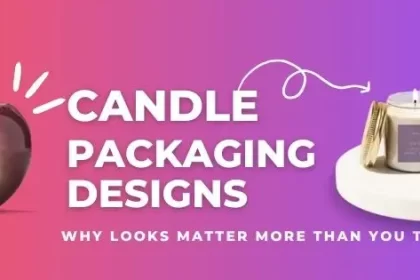Coconut oil has long been a staple in kitchens, beauty cabinets, and wellness routines. From Indian-known coconut oil brands like Parachute to traditional brands in Kerala, the packaging plays a crucial role in reflecting the product’s oil purity and natural essence. In this beginner’s guide, we’ll explore how to packaging design that not only looks appealing but also tells a story about the product’s origins and quality.
Understand the Product and Its Audience
Packaging isn’t just a protective layer; it’s the first impression. For a product like coconut oil, which is associated with purity, health, and natural goodness, the packaging must reflect these values.
Brands like Parachute have mastered the art of building trust through minimalist yet recognizable designs. Take inspiration from their success to craft packaging that resonates with your audience.
Who Are You Designing For?
Begin by identifying your target audience. Are you designing for:
- Health-conscious consumers seeking organic or cold-pressed options?
- Beauty enthusiasts looking for nourishing solutions?
- Traditionalists who value the heritage of Kerala-style coconut oil?
The better you understand your audience, the easier it is to create packaging that speaks their language.
– Highlight Oil Purity
Trust Through Transparency
Consumers prioritize purity when purchasing coconut oil. Packaging must reassure them of your product’s authenticity. Consider:
- Clear bottles or windows to showcase the natural oil.
- Labels with certifications, like organic or virgin oil.
- Minimalistic design elements, symbolizing unadulterated purity.
Indian coconut oil brands often use earthy tones and images of coconuts to highlight their authenticity. Emulating these visual cues can lend credibility to your product.
– Choose Materials Wisely
Sustainability and Functionality
Coconut oil is a natural product, so its packaging should reflect eco-conscious values. Materials like glass, biodegradable plastics, or recycled paper can emphasize sustainability.
Here’s what to consider:
- Glass jars for premium products—elegant and reusable.
- HDPE bottles for durability and affordability, similar to Parachute’s classic design.
- Innovative pouches for portability and reduced environmental impact.
– Design for Kerala-Inspired Aesthetics
Drawing From Tradition
Kerala, known as the land of coconuts, provides endless inspiration for packaging design. To evoke a connection to this origin, consider:
- Colors like green, brown, and white symbolize nature and coconuts.
- Hand-drawn illustrations of palm trees, coconuts, or Kerala’s iconic backwaters.
- Typography in traditional styles, paired with modern, readable fonts.
Brands leveraging these Kerala-inspired aesthetics often stand out for their authenticity and cultural storytelling.
– Craft an Informative Label
What Should Your Label Say?
An effective label is both informative and engaging. Key details include:
- Type of oil (virgin, cold-pressed, refined, etc.)
- Key benefits, like hair nourishment, skin hydration, or cooking versatility.
- Certifications for organic or purity standards.
Use icons and graphics to make the information visually digestible. For instance, a simple drop icon can represent purity, while a coconut image can emphasize natural sourcing.
– Stand Out with Branding
Create a Memorable Identity
Strong branding helps differentiate your product in a crowded market. Here’s how to create a cohesive brand image:
- Consistent color schemes across all packaging sizes.
- A memorable logo that reflects natural oil purity and trustworthiness.
- Taglines that reinforce your product’s unique selling points, such as “Purely Natural, Proudly Kerala.”
Modern consumers appreciate brands that combine heritage with innovation. Invest in thoughtful branding to connect emotionally with your audience.
– Incorporate Practical Features
Functionality Is Key
Great packaging isn’t just about looks—it’s also about usability. For coconut Oil Packaging, consider:
- Leak-proof caps to prevent spills.
- Measurement markers for precise usage in cooking or DIY beauty treatments.
- Easy-to-hold bottle label design, especially for larger quantities.
Practical features ensure customer satisfaction, encouraging repeat purchases.
– Test, Iterate, and Evolve
Gather Feedback
Once you’ve developed a packaging prototype, test it with your target audience. Ask questions like:
- Does the design communicate oil purity and natural essence?
- Is the packaging functional and sustainable?
- How does it compare to competitors like Parachute or Kerala-based brands?
Iterate based on feedback to refine your design. Packaging trends evolve, so stay adaptable and open to change.

Source: in.pinterest.com

Source: in.pinterest.com
Conclusion
Creating the perfect coconut oil packaging involves blending functionality with storytelling. By understanding your audience, emphasizing purity, and incorporating Kerala-inspired aesthetics, you craft designs that resonate with consumers and stand out in the market. Whether you’re targeting health-conscious individuals or traditionalists, let your packaging reflect the essence of natural oil and the purity it promises.






















